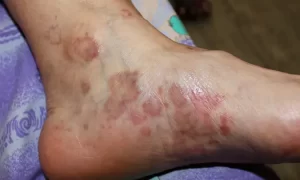
Noro virus – symptoms & treatment
Have you ever had episodes of really bad stomach issues after eating meals from restaurants or some eatery? Pretty sure everyone has at least experienced it once in their lifetime or knew someone around them that has had it. Do you know that there are many pathogens that could be responsible for this problem? One of them is the norovirus. Health screening among food handlers might actually help to reduce such incidence.
Norovirus is often associated with food poisoning or called a ‘stomach bug’/ ‘stomach flu’. These viruses are known to be highly contagious as a person with norovirus illness can easily shed billions of norovirus particles and there are many different types of noroviruses. Being infected by one of the types would not give immunity towards the other types although the person has developed some form of immunity against a certain type. Hence, a person of all ages may get infected with norovirus at any point of life and it is common to get it more than once throughout their life.
This virus is easily spread from one person to another. This could be from a person’s close contact with another person already infected by norovirus, touching surfaces that have the virus on it and then touching the mouth or eating food that has been prepared by those already infected with norovirus.
Symptoms of norovirus at a glance seem like any other infection causing stomach issues or inflammation of the stomach or the intestines. Main symptoms are nausea, vomiting, stomach pain and diarrhoea. It can be accompanied with fever, headache and body aches. Symptoms usually develop around 12 to 48 hours after norovirus exposure. These symptoms should improve in 1 to 3 days.
There are no specific medicines to treat norovirus. A person with norovirus infection should make sure to stay off from work or school for at least 48 hours after the symptoms have subsided. Drink plenty of fluids to avoid getting dehydrated. Unsweetened fruit juice or soup can be another form of fluids if drinking water sounds a bit boring to have it all the time. Most cases of norovirus should be able to resolve on its own with plenty of rest and keeping hydration level at all-time high. Taking paracetamol to ease the fever or aches is advisable. Never decide to use antibiotics without prescription to treat this condition as it is proven not effective against viruses.
A person should seek immediate medical advice if the person with norovirus infection develop signs of severe dehydration such as passing only little to no urine or losing consciousness, having trouble to keep the fluid down, a bloody diarrhoea, symptoms that does not show any sign of improvement even after days or a person with other serious underlying medical concerns such as kidney disease that is prone to get worse when episode of diarrhoea and vomiting persists. These situations should ring an alarm and solely treating at home would not be helpful.
Since norovirus illness is easily spread and highly contagious, taking preventive measures could do wonders and help a person from catching the stomach flu or from further spreading the virus. Practising basic hygiene such as washing hands frequently after using the toilet, before eating and preparing food can help minimise risk for norovirus infections. Washing hands with warm water and soap is the best way to make sure the hand is clean because using alcohol-based hand gels or hand sanitizers alone does not necessarily kill this norovirus. It is important to clean and disinfect possible contaminated surfaces with a bleach-based household cleaner. Remember to wash clothing or bedding possibly contaminated with the virus by using hot water and drying it with the highest heat setting or temperature. Get Vaccinated.



